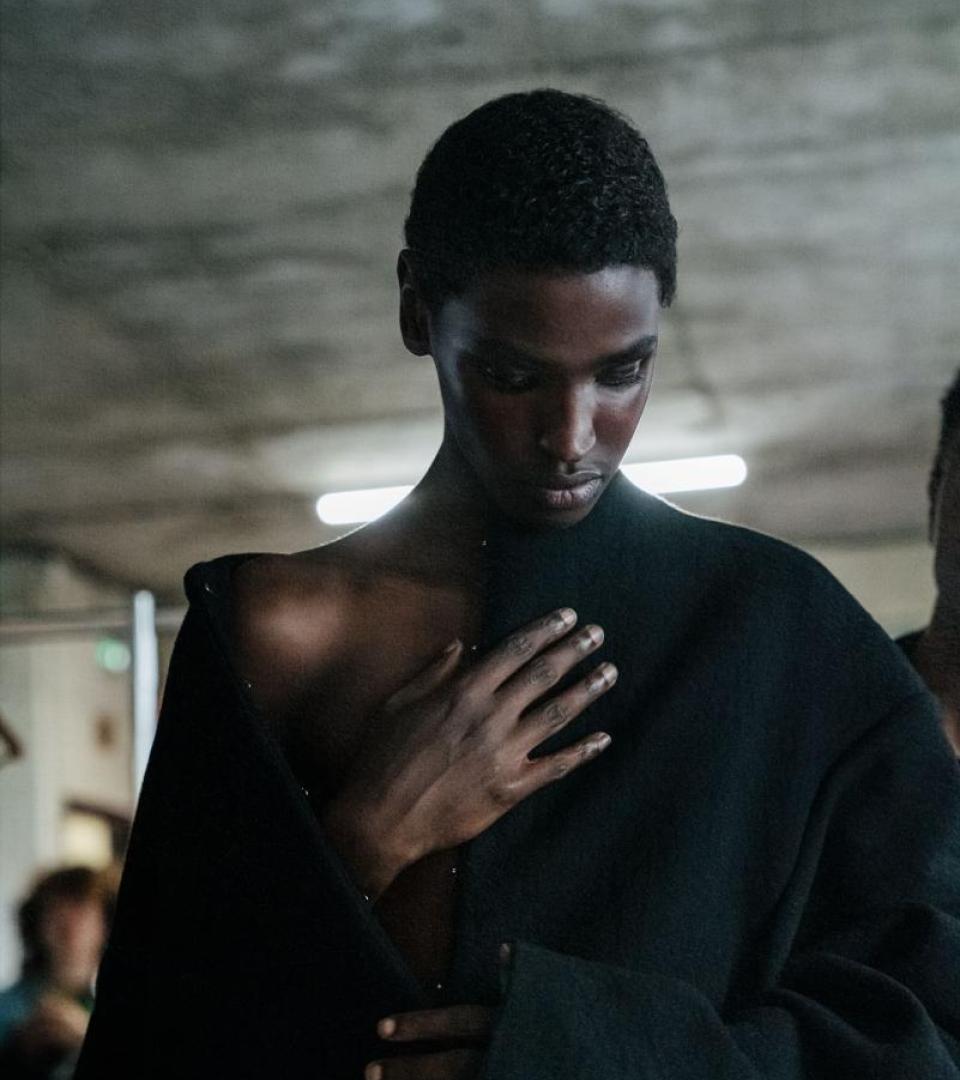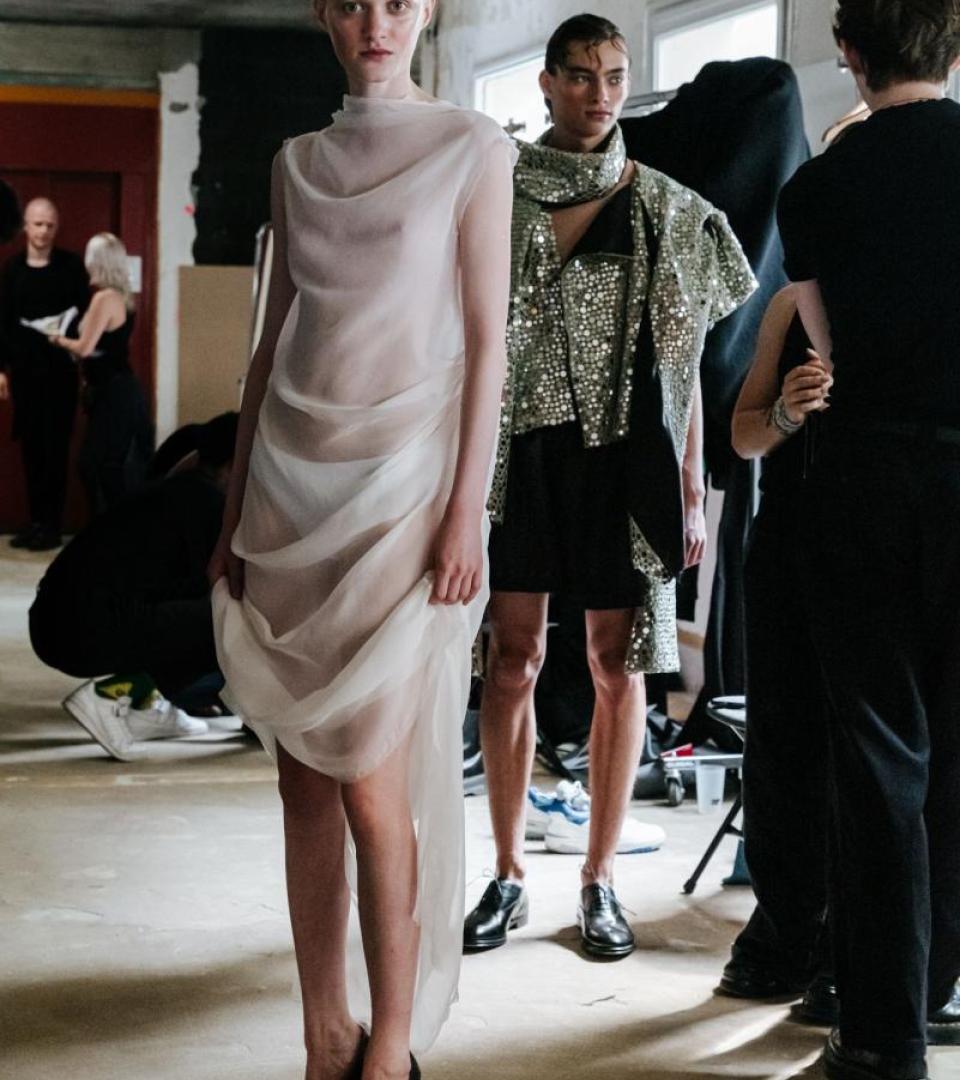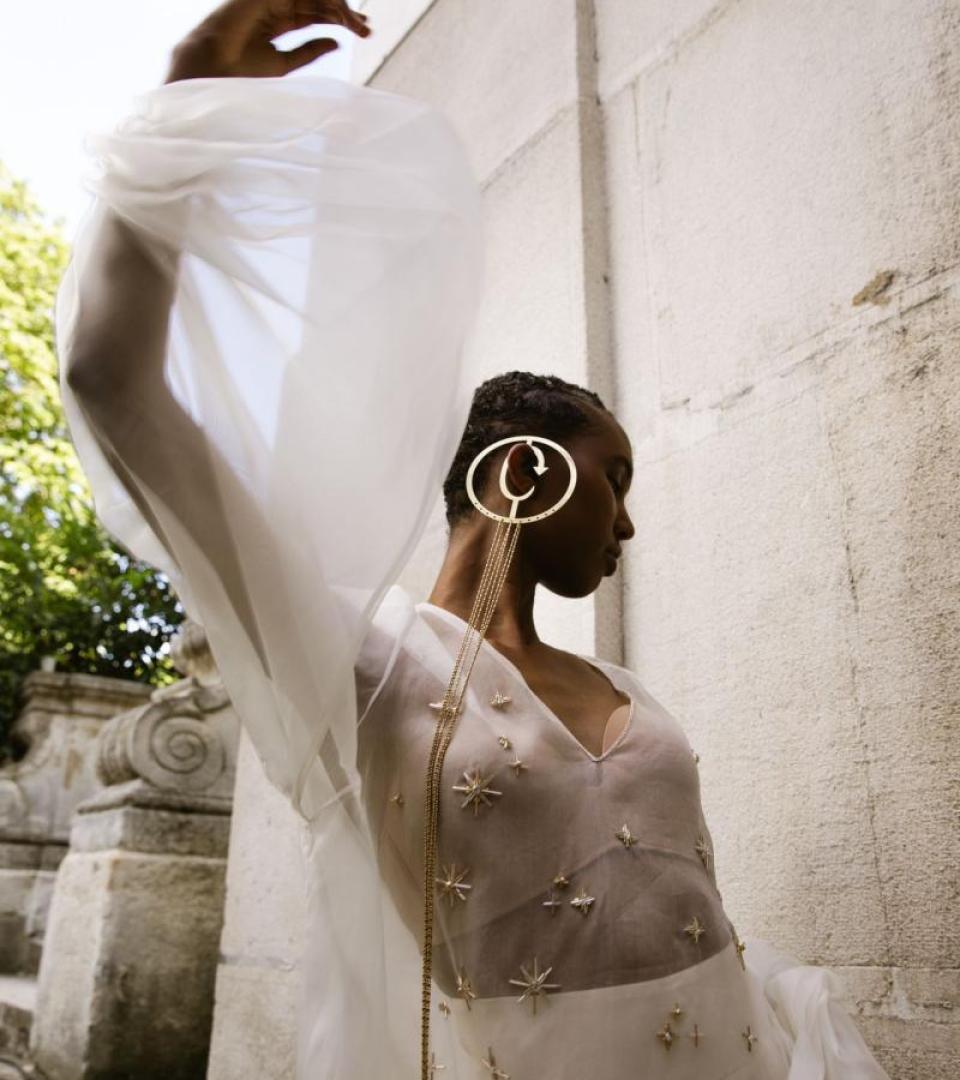Whether through clothing, accessories, works of art or other objects, Poiret's world is expressed in a polychromatic approach, revealing a bright perspective on the world. “Women believe they can distinguish themselves and recognise themselves in shades of grey. Fashion today needs a new master,” he asserted. Born in Paris in 1879, Poiret trained with Jacques Doucet before opening his own couture House in 1903. By banishing the corset, he brought to light a liberated, curvaceous body with the famous “Joséphine” dress of 1907 as a manifesto. This was not only a radical reinterpretation of morphology, but also a correspondence with the art of his time, through a palette inspired by Fauvism. As a collector, he collaborated with artists such as Paul Iribe and Raoul Dufy, and after World War I, he introduced the influence of the Russian Ballets to fashion. He went on to create his own perfume house and participate in the International Exhibition of Decorative Arts in Paris, chartering three barges to showcase his creations.
Beyond the retrospective dimension and the beauty of the pieces along with Iribe's drawings, the emblematic “Marrakech” dress, and photos showing Denise Poiret, his wife and muse, dressed by Poiret himself, visitors will discover exhibition's interplay of correspondences, which inspire future collections of Yves Saint Laurent, Dries Van Noten, Azzedine Alaia, Jean Paul Gaultier, and Alphonse Maitrepierre. A genuine celebration of materials in which silk velvet, sequins and iridescent silk damask pay tribute to the master of fashion, unfairly despised by Gabrielle Chanel and often reduced to an old man with an expensive taste for anachronistic styles.
There is something monumental and generous about his work, which testifies to his cosmopolitan taste as a visionary, which by Christian Dior recognised as the great innovator of fashion. As Marie Sophie Carron de la Carrière describes with emotion and panache in the exhibition catalogue dedicated to him: “Like a modern-day artistic director, Poiret was a discoverer and gatherer of new talents who were invited to collaborate on his creative projects.” A precursor of the 1925 definition of Art Deco, he encompassed all the applied arts by breaking down the barriers between disciplines while defining a new style of clothing and environment – and assembling its components together under a single label. A sensitive artist, scholar and epicurean, he brought his talents to bear in a wide range of fields including couture and theatre costumes to the decorative arts – furniture, textile printing, wallpaper, carpets, lighting – as well as interior design, perfume, painting and music. There was also teaching within the school he founded, and gastronomy – perhaps the only art form that, in his opinion, appealed to all the senses.
https://madparis.fr/Paul-Poiret-la-mode-est-une-fete
Catalogue Paul Poiret, la mode est une fête, Gallimard, 2025, 49 euros.



